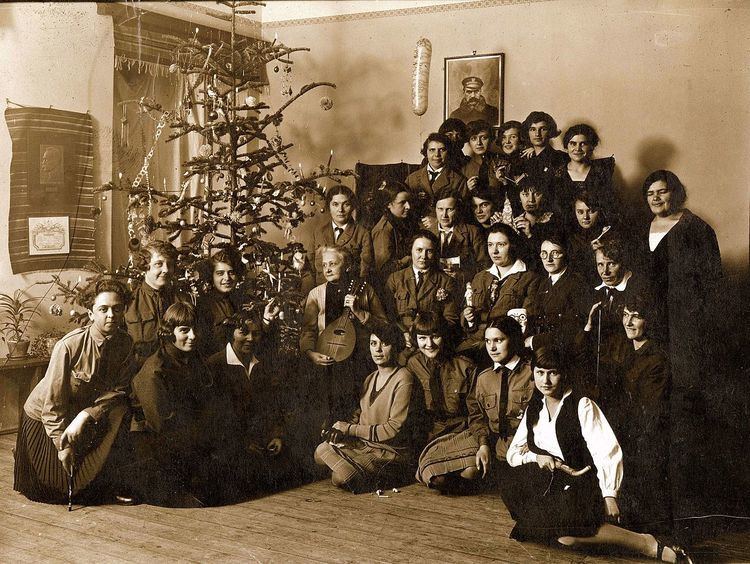 | ||
Przysposobienie Wojskowe Kobiet (Female Military Training) was a Polish organization for women, which existed in the interbellum period as well as during World War II. This is not paramilitary organisation.
Contents
Background
In the autumn of 1918 Poland regained independence, which had been lost as a result of the Partitions of Poland. Soon afterwards, numerous conflicts with several neighbors started, and Polish women in many cases actively participated in them, helping the Polish Army. The most famous example is Ochotnicza Legia Kobiet (Voluntary Legion of Women), created some time in late 1918 or early 1919 in Lwów, for which Poles fought with Ukrainians. First commandant of Ochotnicza Legia Kobiet, Colonel Aleksandra Zagorska, lost in this conflict a son, 15-year-old Jerzy Bitschan, about whom a song was written years later.
Ochotnicza Legia Kobiet also actively participated in the Polish-Soviet War of 1919-1921, it had some 2 500 members and after the Peace of Riga it was dissolved, in 1923. But several women, with Maria Wittek as their leader, did not want to give up. They wanted equality, also concerning military service, which, in their opinion, should also be available to females.
Creation
Przysposobienie Wojskowe Kobiet was created in 1928 and its members were volunteers, women and girls over 15 who wanted to prepare themselves for future military service. Enjoying support of the government and the army, the organization had several facilities, in which summer and winter camps took place. Many of camps that were built and used by Przysposobienie Wojskowe Kobiet, are now popular places of vacationing - Garczyn by Kościerzyna in Pomerania, Istebna by the Olza River in Cieszyn Silesia, Charzykowo near Poznań, Spała by Tomaszów Mazowiecki, but also Koszewniki near Grodno, now located in Belarus.
World War II and aftermath
During Polish September Campaign, members of the organization distinguished themselves and the most famous personality associated with Przysposobienie Wojskowe Kobiet is undoubtedly Elżbieta Zawacka, whose activities helped the Polish Army Headquarters in London to give women of the organization same rights and privileges as those exercised by male soldiers. Females actively took part in the Home Army actions.
Women soldiers were numerous in the Warsaw Uprising, after its collapse, the Germans treated them as regular soldiers, according to the Geneva Convention. Unlike civilians from Warsaw, they were not sent to the concentration camps such as Ravensbrück and Stutthof, but to special POW camps, operated by the Wehrmacht, mainly Stalag VI-C in Oberlangen and Oflag IX-C in Molsdorf. In the Stalag VI-C there were almost 2,000 women-soldiers, they were freed by the 1st Armoured Division (Poland) of General Stanisław Maczek. Oflag IX-C was freed by the Americans of the Third Army (General George S. Patton).
After the war, all Polish women-soldiers were gathered in Burg, Hessen, where they received English uniforms with "Poland" sign on sleeves.
